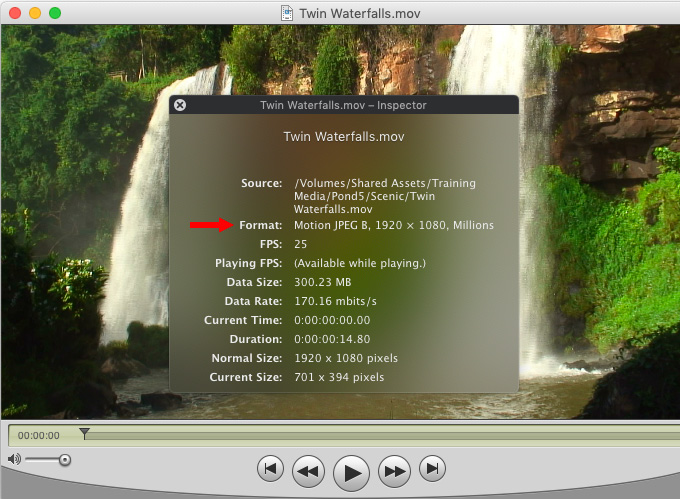

- #Missing codec for quicktime mac how to#
- #Missing codec for quicktime mac movie#
- #Missing codec for quicktime mac pro#

#Missing codec for quicktime mac pro#
In Final Cut Pro X, click this button (indicated by the red arrow) at the top right corner of the Browser to display clips in list view. A good place to start looking for problems are any stock footage clips you are using in past projects. NOTE: Many stock footage clips use these older codecs. While this format does not need conversion, it is also not listed on Apple’s webpage as either supported or unsupported in the future. Here’s another example – Photo JPEG – also displayed in QuickTime Player. For this reason, I don’t recommend using QuickTime Player for media conversion.

ProRes or AVC-Ultra would be a better choice, but QuickTime Player does not allow us to choose the format a file is converted into. While this file is converted at about 20 Mbps, which is quite high, H.264 is still not a good format to use for editing. H.264 is highly compressed and, at lower bit rates, can display artifacts. Here, we are not seeing the source file, we see the converted file.
Format shows the codec, in this case H.264. To determine the media codec of a file opened in QuickTime Player: In fact, QuickTime Player can’t even open the source file, it must convert it first, then open the conversion. The problem is that you don’t have any control over which codec this file gets converted into. When you try to open this same Motion JPEG B file in QuickTime Player, the file is automatically converted into a different codec – H.264. QUICKTIME PLAYER ( Formerly QuickTime Player X) NOTE: QuickTime Player 7, like many of these codecs, also won’t work in the next version of the macOS. In other words, after Mojave, this file won’t open or play. Motion JPEG B is one of the codecs that Apple is removing in the future. Larger numbers, in general, mean higher quality. Data rate shows the bit rate of the media. Format shows the codec, in this case “Motion JPEG B.”. #Missing codec for quicktime mac movie#
Choose Window > Show Movie Inspector (shortcut: Cmd + I). To determine the media codec of the file: The benefit to using the Finder to determine codecs is that, unlike QuickTime, you can select and view multiple files at the same time. NOTE: You’ll soon see that this Cmd + I shortcut is used in multiple applications. The Codecs field describes the media format for both audio and video elements of the file audio and video files never use the same codec. To display this window, select as many files as you want in the Finder then, either choose File > Get Info or type the shortcut Cmd + I. I have no idea why the Finder can’t get this information from the server. Notice that More Info on the server version (far left) is empty, while More Info for files stored locally displays the codec as well as other media information. The two files on the left are exactly the same – except one is stored on a Synology server and the other is stored on the internal hard disk of my Mac. In the screen shot above, you see three files with their media information displayed in the Finder. There are hundreds of codecs, each designed for different tasks.Īs I was writing this article I discovered something interesting. Short for “Compressor/Decompressor”, common codecs include MP3, WAV, JPEG, PNG, H.264 and ProRes. These are the mathematics that convert light and sound into binary ones and zeros that allow us to store and playback images and sounds on our computer. #Missing codec for quicktime mac how to#
In this article, I’ll show you how to determine your media codecs using:ĬODEC: ALL media uses codecs. NOTE: Here’s the Apple KnowledgeBase article describing what’s happening. With Apple discontinuing support for many popular media codecs in the next release (after Mojave) of the macOS, it is more important than ever to determine what codecs your media uses.







 0 kommentar(er)
0 kommentar(er)
